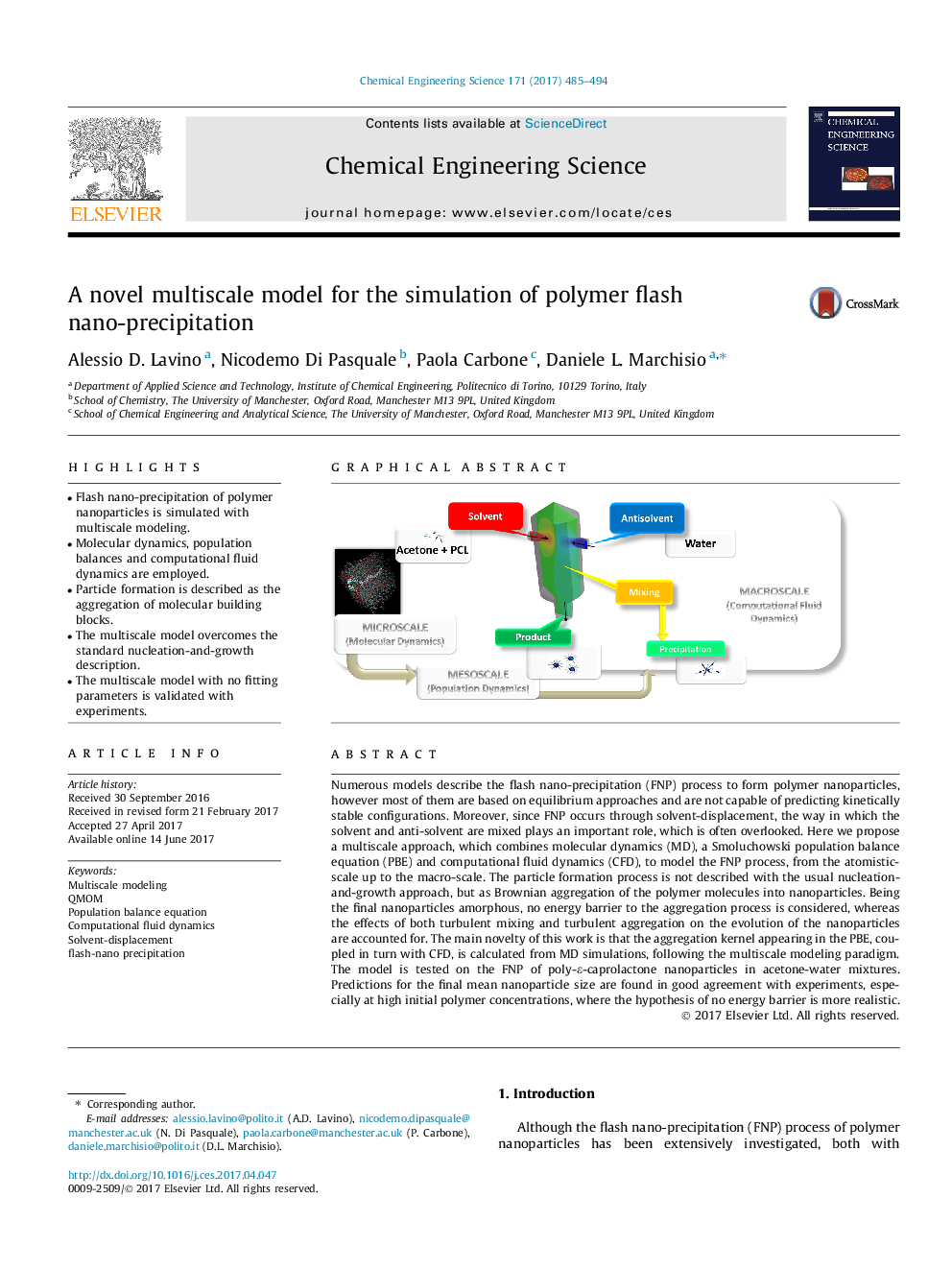| کد مقاله | کد نشریه | سال انتشار | مقاله انگلیسی | نسخه تمام متن |
|---|---|---|---|---|
| 6467163 | 1423248 | 2017 | 10 صفحه PDF | دانلود رایگان |

- Flash nano-precipitation of polymer nanoparticles is simulated with multiscale modeling.
- Molecular dynamics, population balances and computational fluid dynamics are employed.
- Particle formation is described as the aggregation of molecular building blocks.
- The multiscale model overcomes the standard nucleation-and-growth description.
- The multiscale model with no fitting parameters is validated with experiments.
Numerous models describe the flash nano-precipitation (FNP) process to form polymer nanoparticles, however most of them are based on equilibrium approaches and are not capable of predicting kinetically stable configurations. Moreover, since FNP occurs through solvent-displacement, the way in which the solvent and anti-solvent are mixed plays an important role, which is often overlooked. Here we propose a multiscale approach, which combines molecular dynamics (MD), a Smoluchowski population balance equation (PBE) and computational fluid dynamics (CFD), to model the FNP process, from the atomistic-scale up to the macro-scale. The particle formation process is not described with the usual nucleation-and-growth approach, but as Brownian aggregation of the polymer molecules into nanoparticles. Being the final nanoparticles amorphous, no energy barrier to the aggregation process is considered, whereas the effects of both turbulent mixing and turbulent aggregation on the evolution of the nanoparticles are accounted for. The main novelty of this work is that the aggregation kernel appearing in the PBE, coupled in turn with CFD, is calculated from MD simulations, following the multiscale modeling paradigm. The model is tested on the FNP of poly-ε-caprolactone nanoparticles in acetone-water mixtures. Predictions for the final mean nanoparticle size are found in good agreement with experiments, especially at high initial polymer concentrations, where the hypothesis of no energy barrier is more realistic.
168
Journal: Chemical Engineering Science - Volume 171, 2 November 2017, Pages 485-494